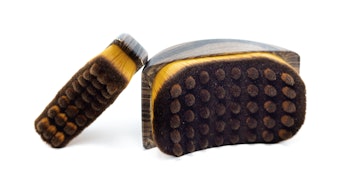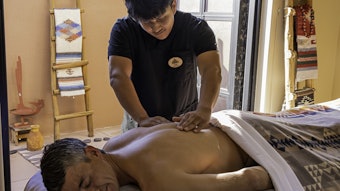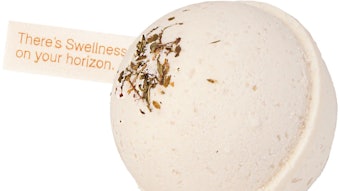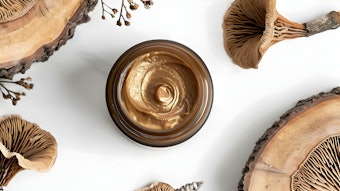Going to a spa isn’t just about the massages and facials anymore. People still visit spas to relax and rejuvenate, but as nutrition is playing an increasingly important role in the body/mind/spirit experience, spas are getting into—and creative with—this emerging trend.
Food in the spa experience
Most spa advertisements display pictures of clients on massage tables and experiencing facial treatments, but that only portrays the work done on the outside of the body, says Laurie Erickson, wellness chef at The Spa at Sea Island in Sea Island, Georgia. Nutrition also plays a vital role in the spa experience, as it provides fuel for the body and often results in healthier skin and better fitness. “My mantra is to work on the body from the inside out,” says Erickson. “That can make a difference in how your skin looks and feels. Beautiful skin depends on what you’re eating.”
Today’s spas offer guests an array of activities with an emphasis on promoting good health and nutrition, starting with wellness cuisine options. Many spa chefs are calling on all their culinary talents to create healthy, appetizing meal plans that can satisfy the fancies of even the most fastidious clients. And spas are also inviting guests into the kitchen, allowing them to partake in interactive nutrition-based cooking classes and demonstrations.
With many people not taking the time to cook anymore, frozen food has become increasingly common, says Erickson. She believes true health begins in the kitchen, and she’s on a mission to encourage and inspire people to cook easy, quick and nutritious meals more often with a balance of nutrients and wholesome ingredients. To help its clients do so, The Spa at Sea Island offers personal and individualized nutrition and wellness consultations as well as cooking classes.
Kicking it up a notch
Along with a nutritionist, Erickson coaches her clients as they strive to achieve better health and lose weight, if necessary. Her goal is to teach people to cook for themselves as well as to open their eyes to fresh ideas, and all restaurants at The Spa at Sea Island have wellness cuisine options on the menu. The menu itself consists of natural foods with lots of fiber and no preservatives or additives.
A particularly interesting component of The Spa at Sea Island is that Erickson often accompanies her clients to the local grocery store to provide instruction on how to correctly read labels and discern good food choices from bad ones. This includes picking up fish and determining freshness by its smell. “I open their eyes to chemicals and preservatives in the foods they choose, and tell them what to avoid,” she says.
Another means to determine which foods to consume and avoid is as simple as A, B, AB and O—blood type, that is. The Echo Valley Ranch & Spa in Jesmond, British Columbia, Canada, endorses a diet based on the book Eat Right 4 Your Blood Type
by Peter J. D’Adamo, MD (G. P. Putman’s Sons, 1996). It is rooted in the belief that different foods are more beneficial or harmful depending on a person’s blood type.
“The idea is that we all need special food, and in order to understand why, we need to understand how the human body works and the role that food plays in rebuilding our immune system,” says executive chef Kim Madsen. This helps clients to understand how important it is to maintain a balanced diet. Following the diet is not mandatory, but guests who are interested can test their blood type at the ranch and sample the food options available. Every day, Madsen prepares meals suitable for all blood types; he also advises people on what foods to eat or avoid, answers nutritional questions, and teaches people to plan and cook healthier meals for themselves.
Destination kitchen
A cooking school that recently opened its doors to the public is the new culinary center called La Cocina que Canta, or “The Kitchen that Sings,” at Rancho La Puerta in Tecate, Baja California, Mexico. The cooking facility extends for more than 4,500 square feet and comprises a large kitchen-as-a-classroom, cookbook library and culinary gift shop, all set in the midst of a six-acre farm of fresh, organically grown fruits, herbs and vegetables.
Famous for its orchards, garden and vineyard, the spa offers hands-on cooking classes—with just-harvested organic ingredients—led by culinary director Antonia Allegra and creative chef Jesús González, and often featuring guest chefs. González typically prepares and serves up a modified-vegetarian, low-fat, high-flavor Mexican-Mediterranean cuisine for his take on spa eating.
The Oaks at Ojai in Ojai, California, also offers a low-fat, low-calorie menu designed by menu consultant Eleanor Brown. Guests can feast on foods such as fresh fish, poultry and locally grown fruits and vegetables without any salt or refined sugar. Brown spices up the 1,000 calorie-a-day food plan with fresh herbs, lemons, wine, spices, gourmet vinegars and
homemade salsas.
However, according to the Destination Spa Group, a marketing, networking and advocacy group for some of the world’s top spas, the focus is no longer on calories or grams of carbohydrates and fats, but on high-quality whole foods that maximize natural flavor and health benefits.
Some spas are teaching their clients a variety of ways to use fresh, perishable and often seasonal ingredients, says Michelle Kleist, executive director of the Destination Spa Group. For instance, an instructor chef might pick up a sprig of rosemary and have clients suggest different ways it can be incorporated into a dish.
And it isn’t always just about the presentation of the meal. Sometimes the demonstrations include techniques such as chopping and dicing. These demonstrations should be interactive and hands-on, Kleist says. This keeps clients active and involved in their own nutrition services. For instance, spas that have gardens on the property might offer gardening classes that can include instruction on how to grow and work with fresh herbs at home.
Take-home tips
With obesity and health issues in the spotlight in the United States, the public is becoming more health conscious and demanding better food choices, says Kleist. Food tips and easy-to-prepare recipes can be found in a variety of places, including spa cookbooks, the Internet, and even Skin Inc. magazine’s own monthly Spa Cuisine columns that feature recipes from spa chefs around the world. But, for the long term, it is more useful to teach clients concepts rather than mere recipes.
Wellness is the root of the spa industry, and a key factor is nutrition, says Kleist. Spas are more than just scrubs and massages—they are increasingly trying to incorporate more wellness into the experience. As Kleist sums up, “The evolution of the spa industry has come full circle and back to its wellness roots.”
Food in the spa experience
Most spa advertisements display pictures of clients on massage tables and experiencing facial treatments, but that only portrays the work done on the outside of the body, says Laurie Erickson, wellness chef at The Spa at Sea Island in Sea Island, Georgia. Nutrition also plays a vital role in the spa experience, as it provides fuel for the body and often results in healthier skin and better fitness. “My mantra is to work on the body from the inside out,” says Erickson. “That can make a difference in how your skin looks and feels. Beautiful skin depends on what you’re eating.”
Today’s spas offer guests an array of activities with an emphasis on promoting good health and nutrition, starting with wellness cuisine options. Many spa chefs are calling on all their culinary talents to create healthy, appetizing meal plans that can satisfy the fancies of even the most fastidious clients. And spas are also inviting guests into the kitchen, allowing them to partake in interactive nutrition-based cooking classes and demonstrations.
With many people not taking the time to cook anymore, frozen food has become increasingly common, says Erickson. She believes true health begins in the kitchen, and she’s on a mission to encourage and inspire people to cook easy, quick and nutritious meals more often with a balance of nutrients and wholesome ingredients. To help its clients do so, The Spa at Sea Island offers personal and individualized nutrition and wellness consultations as well as cooking classes.
Kicking it up a notch
Along with a nutritionist, Erickson coaches her clients as they strive to achieve better health and lose weight, if necessary. Her goal is to teach people to cook for themselves as well as to open their eyes to fresh ideas, and all restaurants at The Spa at Sea Island have wellness cuisine options on the menu. The menu itself consists of natural foods with lots of fiber and no preservatives or additives.
A particularly interesting component of The Spa at Sea Island is that Erickson often accompanies her clients to the local grocery store to provide instruction on how to correctly read labels and discern good food choices from bad ones. This includes picking up fish and determining freshness by its smell. “I open their eyes to chemicals and preservatives in the foods they choose, and tell them what to avoid,” she says.
Another means to determine which foods to consume and avoid is as simple as A, B, AB and O—blood type, that is. The Echo Valley Ranch & Spa in Jesmond, British Columbia, Canada, endorses a diet based on the book Eat Right 4 Your Blood Type
by Peter J. D’Adamo, MD (G. P. Putman’s Sons, 1996). It is rooted in the belief that different foods are more beneficial or harmful depending on a person’s blood type.
“The idea is that we all need special food, and in order to understand why, we need to understand how the human body works and the role that food plays in rebuilding our immune system,” says executive chef Kim Madsen. This helps clients to understand how important it is to maintain a balanced diet. Following the diet is not mandatory, but guests who are interested can test their blood type at the ranch and sample the food options available. Every day, Madsen prepares meals suitable for all blood types; he also advises people on what foods to eat or avoid, answers nutritional questions, and teaches people to plan and cook healthier meals for themselves.
Destination kitchen
A cooking school that recently opened its doors to the public is the new culinary center called La Cocina que Canta, or “The Kitchen that Sings,” at Rancho La Puerta in Tecate, Baja California, Mexico. The cooking facility extends for more than 4,500 square feet and comprises a large kitchen-as-a-classroom, cookbook library and culinary gift shop, all set in the midst of a six-acre farm of fresh, organically grown fruits, herbs and vegetables.
Famous for its orchards, garden and vineyard, the spa offers hands-on cooking classes—with just-harvested organic ingredients—led by culinary director Antonia Allegra and creative chef Jesús González, and often featuring guest chefs. González typically prepares and serves up a modified-vegetarian, low-fat, high-flavor Mexican-Mediterranean cuisine for his take on spa eating.
The Oaks at Ojai in Ojai, California, also offers a low-fat, low-calorie menu designed by menu consultant Eleanor Brown. Guests can feast on foods such as fresh fish, poultry and locally grown fruits and vegetables without any salt or refined sugar. Brown spices up the 1,000 calorie-a-day food plan with fresh herbs, lemons, wine, spices, gourmet vinegars and
homemade salsas.
However, according to the Destination Spa Group, a marketing, networking and advocacy group for some of the world’s top spas, the focus is no longer on calories or grams of carbohydrates and fats, but on high-quality whole foods that maximize natural flavor and health benefits.
Some spas are teaching their clients a variety of ways to use fresh, perishable and often seasonal ingredients, says Michelle Kleist, executive director of the Destination Spa Group. For instance, an instructor chef might pick up a sprig of rosemary and have clients suggest different ways it can be incorporated into a dish.
And it isn’t always just about the presentation of the meal. Sometimes the demonstrations include techniques such as chopping and dicing. These demonstrations should be interactive and hands-on, Kleist says. This keeps clients active and involved in their own nutrition services. For instance, spas that have gardens on the property might offer gardening classes that can include instruction on how to grow and work with fresh herbs at home.
Take-home tips
With obesity and health issues in the spotlight in the United States, the public is becoming more health conscious and demanding better food choices, says Kleist. Food tips and easy-to-prepare recipes can be found in a variety of places, including spa cookbooks, the Internet, and even Skin Inc. magazine’s own monthly Spa Cuisine columns that feature recipes from spa chefs around the world. But, for the long term, it is more useful to teach clients concepts rather than mere recipes.
Wellness is the root of the spa industry, and a key factor is nutrition, says Kleist. Spas are more than just scrubs and massages—they are increasingly trying to incorporate more wellness into the experience. As Kleist sums up, “The evolution of the spa industry has come full circle and back to its wellness roots.”










